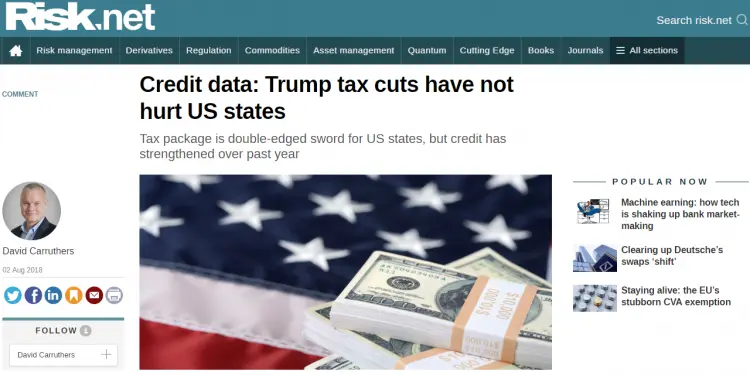“US President Donald Trump says the package of tax cuts he signed into law last year unleashed an “economic miracle”, and with growth leaping to 4.1% in the second quarter, he has at least this one number on his side. The question is whether it can be sustained.”
“US states will be hoping it can. For the states, fiscal stimulus is a double-edged sword; constraining their tax receipts in the short term, while potentially spurring more growth over the longer term. For now – as with the aggregate impact of the cuts themselves – things look good.”
In this series of monthly articles from Risk.net, David Carruthers, head of research at Credit Benchmark, discusses the effect of Trump administration tax cuts on US states, plus compares the recent credit performance of US basic materials, oil and gas, and industrials. Also covered this month is a comparison between the credit trends and distribution of South African vs African (ex-South African) banks, in addition to global credit industry trends.
Read the full article here or in the August edition of Risk Magazine.



